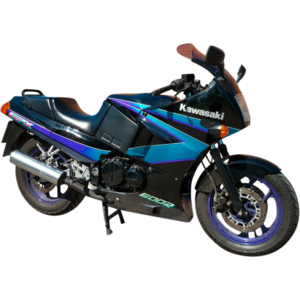Kawasaki GPX 600 R [1993–1999]: A ’90s Sport Touring Icon Revisited
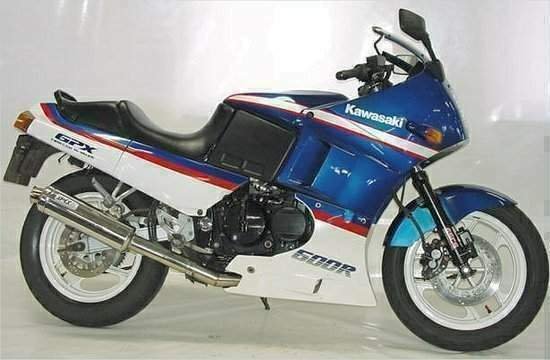
Introduction
The Kawasaki GPX 600 R, also known as the Ninja 600R in some markets, occupies a unique space in motorcycling history. Produced from 1993 to 1999, this inline-four sport-tourer bridged the gap between raw sportbike aggression and long-distance practicality. Riding one today feels like stepping into a time capsule—a reminder of an era when 600cc bikes ruled both highways and twisties with equal confidence. Let’s dissect what made this generation memorable and why it still resonates with riders seeking a mechanical connection often lost in modern electronics.
Design & Styling
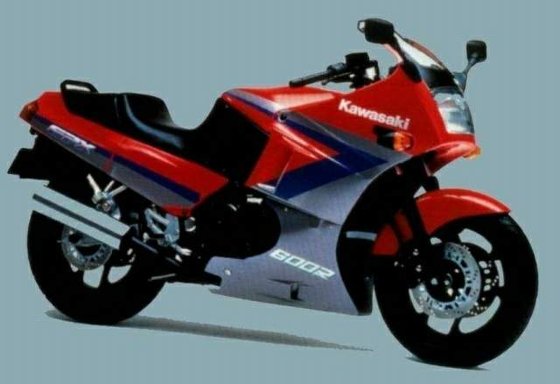
The GPX 600 R’s design screams ’90s Kawasaki. Its full fairing—a mix of angular lines and rounded edges—houses a twin-headlamp setup that became a Ninja family signature. The 760 mm (29.9-inch) seat height feels approachable, even for shorter riders, while the stepped seat design hints at its dual nature: firm enough for sporty riding yet padded for multi-hour tours.
The analog dashboard is refreshingly simple—a large tachometer dominates, flanked by a speedometer, fuel gauge, and basic warning lights. Unlike modern TFT displays, there’s charm in its straightforwardness. The 18-liter (4.76-gallon) fuel tank flares outward, providing decent knee grip, though riders with longer legs might find it slightly narrow compared to contemporary standards.
Engine & Performance
The Heart of a Wolf in Sheep’s Clothing
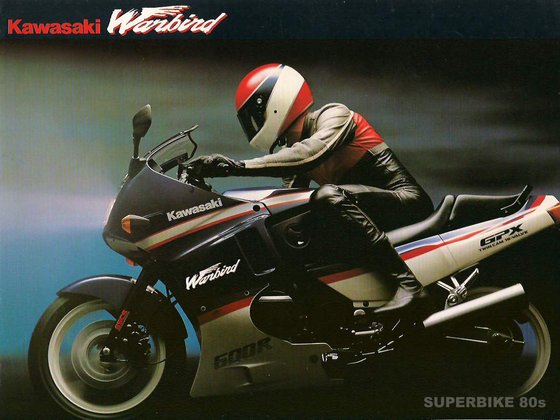
At its core lies a 593cc liquid-cooled inline-four engine—a configuration that defined ’90s performance. Output figures vary slightly across model years, but expect 73–86 HP (54–62 kW) peaking between 10,500–11,000 RPM. What’s surprising is how accessible the power feels. Unlike modern 600s that demand high revs, the GPX delivers a meaty midrange punch.
Twist the throttle, and the Keihin CV carburetors (yes, carburetors!) respond with a linear surge rather than fuel-injected immediacy. It pulls hard from 6,000 RPM, with a glorious crescendo to its 12,000 RPM redline. The claimed 0–100 km/h (0–62 mph) time of 3.7–4 seconds still feels brisk today, though the 208 kg (458.6 lbs) wet weight is noticeable when chasing sportier modern bikes.
Top speed? Officially 210–220 km/h (130–136 mph), but tucked in, you’ll nudge 225 km/h (140 mph)—a thrilling achievement on a pre-ride-by-wire machine. Fuel economy hovers around 5–6 L/100 km (47–37 mpg), depending on how often you tap into that upper rev range.
Handling & Dynamics
A Dance Between Stability and Agility
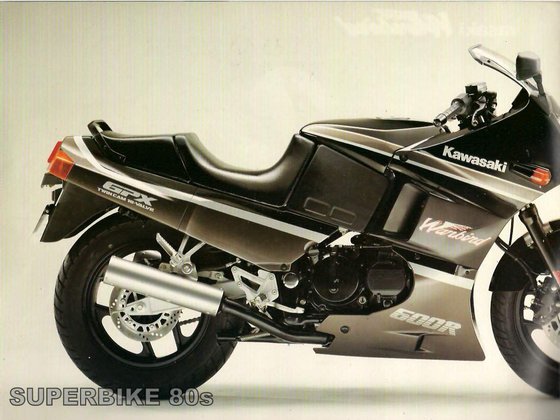
The GPX 600 R’s chassis walks a tightrope between sportbike sharpness and tourer stability. The 38mm telescopic forks feature Kawasaki’s anti-dive technology—a ’90s attempt to prevent front-end compression under braking. While not as sophisticated as modern cartridge systems, they offer decent feedback, with 140 mm (5.5 inches) of travel soaking up bumps better than expected.
Out back, the monoshock’s four-step preload adjustment lets you tailor stiffness for solo rides or two-up touring. The 16-inch wheels (110/80 front, 130/90 rear) feel quirky by today’s 17-inch standards, offering quicker turn-in at the expense of ultimate cornering grip. Push hard, and the Bridgestone Battlax tires of the era (or modern equivalents) will protest sooner than you’d like, but for spirited street riding, it’s more than adequate.
Braking is a mixed bag. The dual 270mm front discs with 2-piston calipers lack initial bite compared to radial setups but provide progressive stopping power once acclimated. The rear single disc is merely functional—a reminder to focus on front-end technique.
Comfort & Touring Credentials
The "R" Stands for "Road Trip"
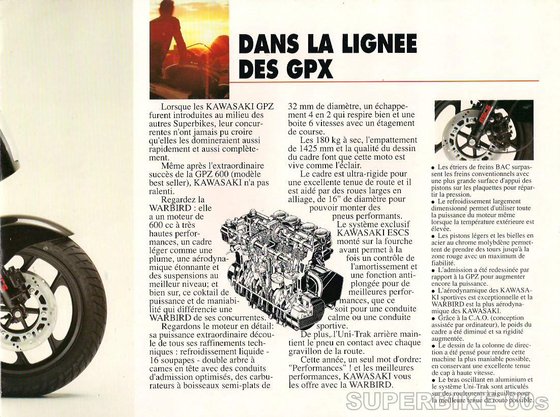
Kawasaki positioned the GPX 600 R as a sport-tourer, and it shows. The riding posture is less extreme than pure sportbikes—handlebars are slightly raised, and footpegs sit lower, enabling a 2–3 hour ride without requiring chiropractor visits. Wind protection from the fairing is decent up to 140 km/h (87 mph), though taller riders might still catch helmet buffeting.
The seat’s vinyl upholstery isn’t plush by today’s standards, but its shape distributes weight effectively. Passenger accommodations are better than most middleweights, making it a viable option for weekend getaways. With 18 liters of fuel capacity, you’ll manage 300–350 km (186–217 miles) between fill-ups—enough to skip the busy gas stations.
Competition
How the GPX 600 R Stacks Up Against ’90s Rivals
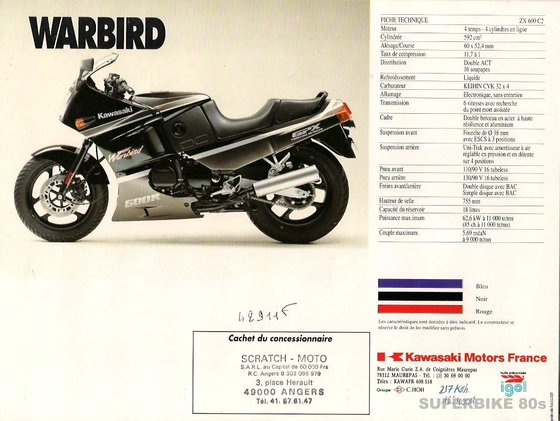
The GPX 600 R faced fierce competition in its heyday:
- Honda CBR600F: The benchmark for balanced performance. Honda’s F-series had a smoother power delivery and slightly nimbler handling but lacked the Kawasaki’s midrange grunt.
- Yamaha YZF600R Thundercat: Yamaha’s answer blended sharper styling with a raucous engine. It edged out the GPX in top-end power but suffered from a harsher ride quality.
- Suzuki GSX-R600: More track-focused, the GSX-R was lighter and faster but punished riders on longer hauls with its aggressive ergonomics.
Where the GPX 600 R shone was its jack-of-all-trades character. It wasn’t the fastest or the most comfortable but offered the best compromise for riders splitting time between canyons and commutes. Today, it’s a favorite among classic collectors for its mechanical simplicity compared to fuel-injected rivals.
Maintenance
Keeping the ’90s Spirit Alive
Owning a GPX 600 R in 2024 means embracing its analog soul—and staying vigilant with maintenance:
- Valve Adjustments: Every 10,000 km (6,200 miles), check those DOHC shims. Intake valves should be 0.13–0.18 mm (0.005–0.007 in), exhaust 0.18–0.23 mm (0.007–0.009 in). Neglect this, and you’ll lose that crisp top-end.
- Carb TLC: Clean those Keihin CVs annually. The factory-recommended 2 turns out on the air screw is a good baseline for idle mixture.
- Oil Changes: Use SAE 10W-40 (3L with filter). Modern synthetic blends work, but stick to API SG or higher.
- Cooling System: Replace coolant every 2 years—2.2L of ethylene glycol mix keeps temps in check.
- Chain & Sprockets: The 15/39 sprocket combo with a 102-link chain wears faster if not lubed weekly. Upgrade to an X-ring chain for longevity.
At MOTOPARTS.store, we stock era-specific parts like:
- NGK DR9EA/DR9EIX spark plugs (gap to 0.7 mm / 0.028 in)
- OEM-spec brake pads compatible with DOT 4 fluid
- Retro-style tires matching the original 16-inch wheel dimensions
Conclusion
The Kawasaki GPX 600 R isn’t just a relic—it’s a testament to an era when riding skill mattered more than traction control. Its inline-four howl, mechanical feedback, and do-it-all personality make it a compelling choice for riders weary of digital overlays. Sure, it demands more upkeep than a modern bike, but that’s part of the charm. Every valve adjustment and carb sync becomes a ritual, connecting you to machinery in a way ABS and ride modes never could.
Whether you’re reliving your ’90s glory days or discovering analog performance for the first time, the GPX 600 R rewards those willing to meet it halfway. And when it’s time for parts, MOTOPARTS.store has your back—because classics deserve to stay on the road.
Specifications sheet
| Engine | |
|---|---|
| Stroke: | Four-stroke |
| Max power: | 54 kW | 72.0 hp |
| Max torque: | 53 Nm |
| Fuel system: | 4x 32mm Keihin CV carburetors |
| Max power @: | 10500 rpm |
| Displacement: | 593 ccm |
| Fuel control: | Double Overhead Cams (DOHC) |
| Max torque @: | 8000 rpm |
| Configuration: | Inline |
| Cooling system: | Liquid |
| Compression ratio: | 11.7:1 |
| Number of cylinders: | 4 |
| Dimensions | |
|---|---|
| Wheelbase: | 1425 mm (56.1 in) |
| Dry weight: | 180 |
| Wet weight: | 208 |
| Seat height: | 760 mm (29.9 in) |
| Fuel tank capacity: | 18 L (4.76 US gal) |
| Drivetrain | |
|---|---|
| Final drive: | chain |
| Chain length: | 102 |
| Transmission: | 6-speed |
| Rear sprocket: | 39 |
| Front sprocket: | 15 |
| Maintenance | |
|---|---|
| Rear tire: | 130/90-v16 |
| Engine oil: | 10W40 |
| Front tire: | 110/80-v16 |
| Brake fluid: | DOT 4 |
| Spark plugs: | NGK DR9EA or NGK DR9EIX |
| Spark plug gap: | 0.7 |
| Coolant capacity: | 2.2 |
| Forks oil capacity: | 0.67 |
| Engine oil capacity: | 3.0 |
| Engine oil change interval: | Every 5000km or 2 years, whichever comes first |
| Valve clearance (intake, cold): | 0.13–0.18 mm |
| Valve clearance (exhaust, cold): | 0.18–0.23 mm |
| Recommended tire pressure (rear): | 2.5 bar (36 psi) |
| Recommended tire pressure (front): | 2.2 bar (32 psi) |
| Chassis and Suspension | |
|---|---|
| Rear brakes: | Single disc |
| Front brakes: | Dual disc, 2-piston calipers |
| Rear suspension: | Monoshock, adjustable preload |
| Front suspension: | 38mm telescopic fork with anti-dive |
| Rear wheel travel: | 130 mm (5.1 in) |
| Front wheel travel: | 140 mm (5.5 in) |



